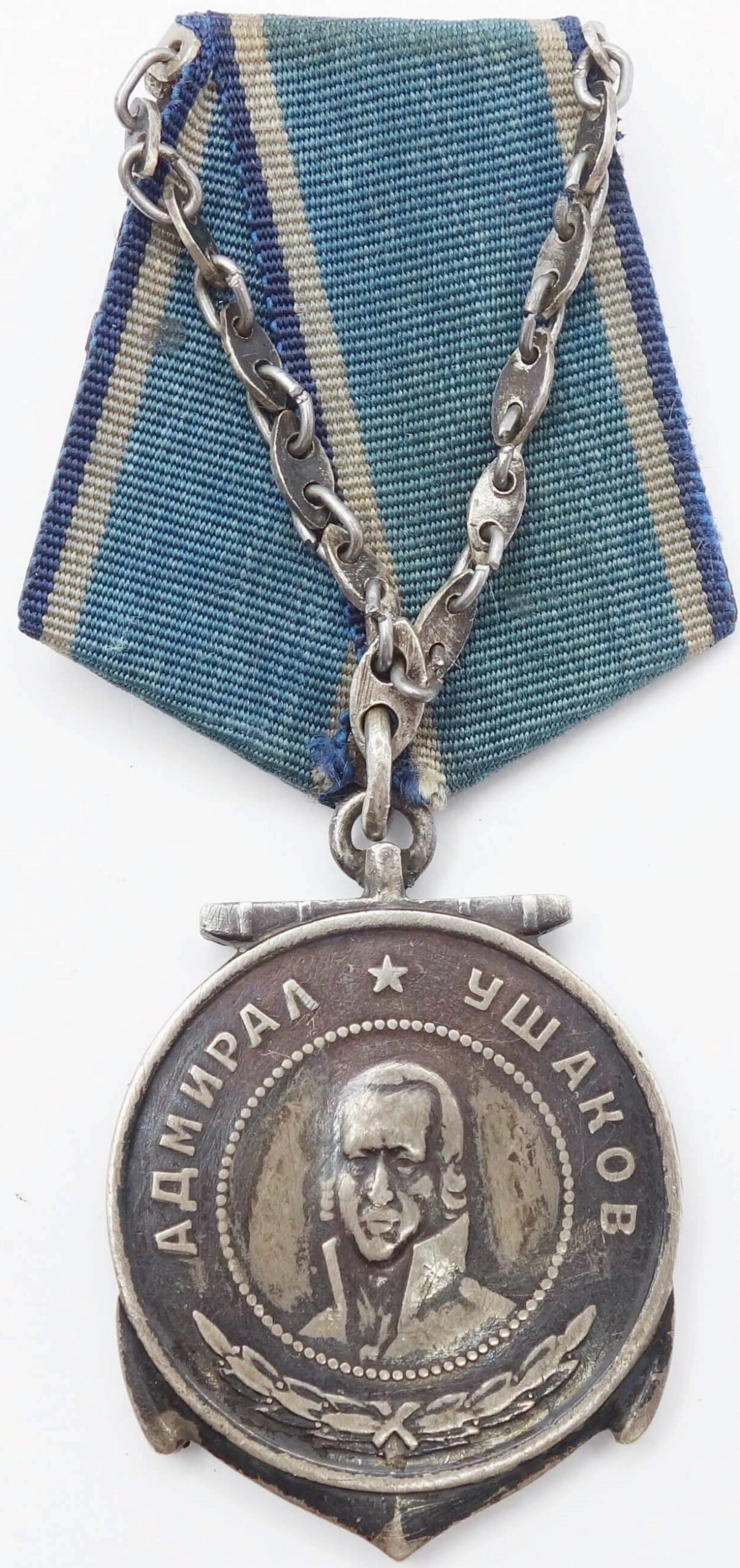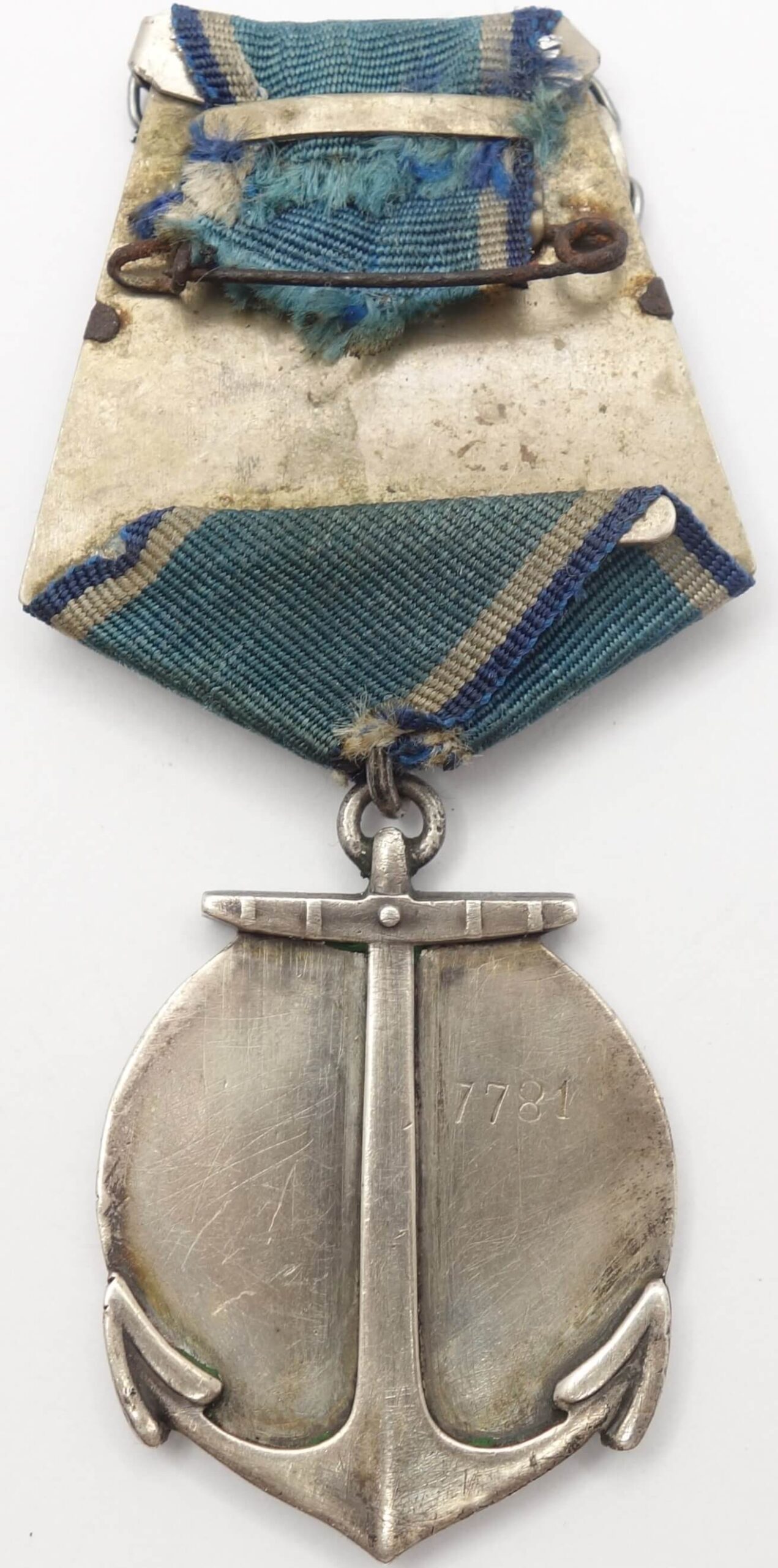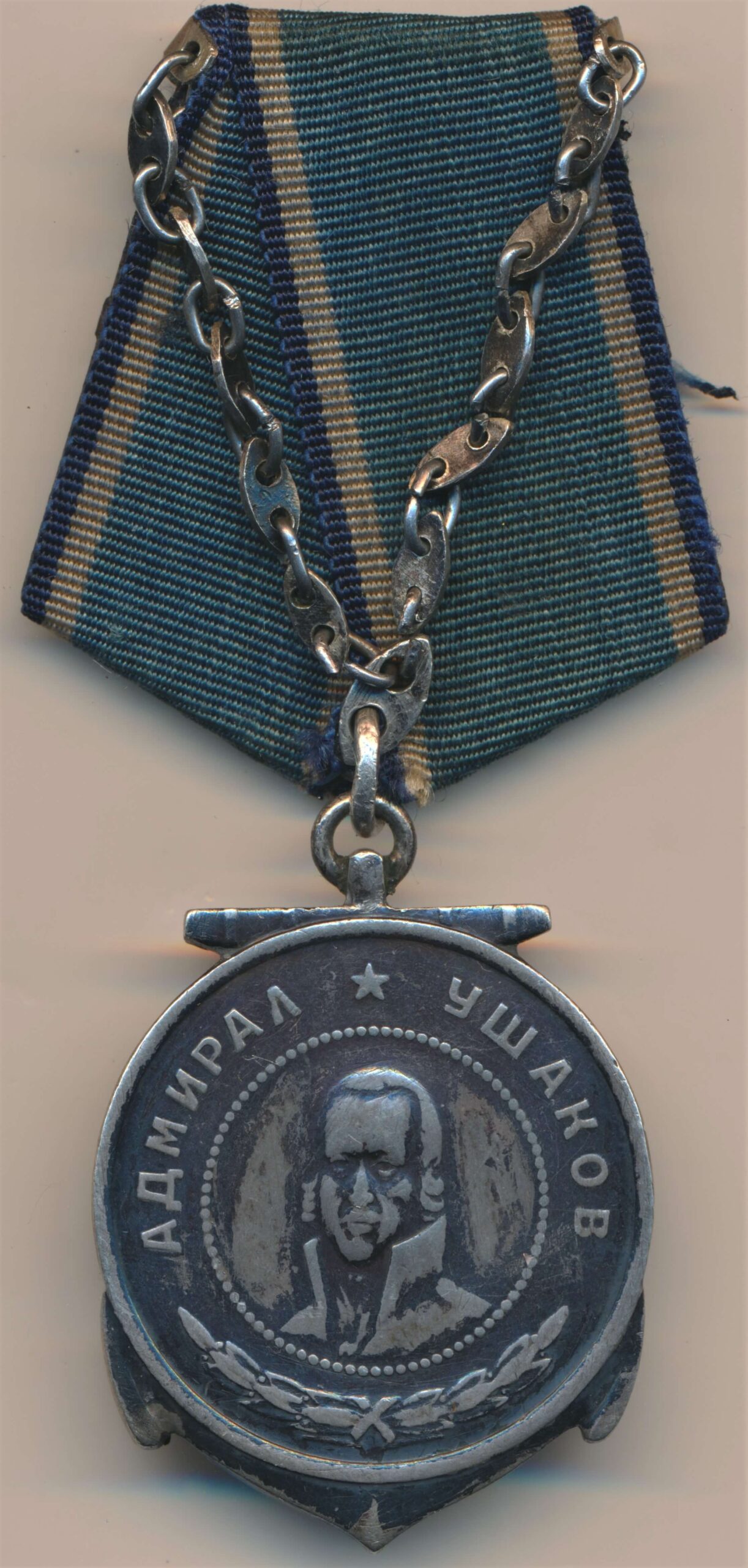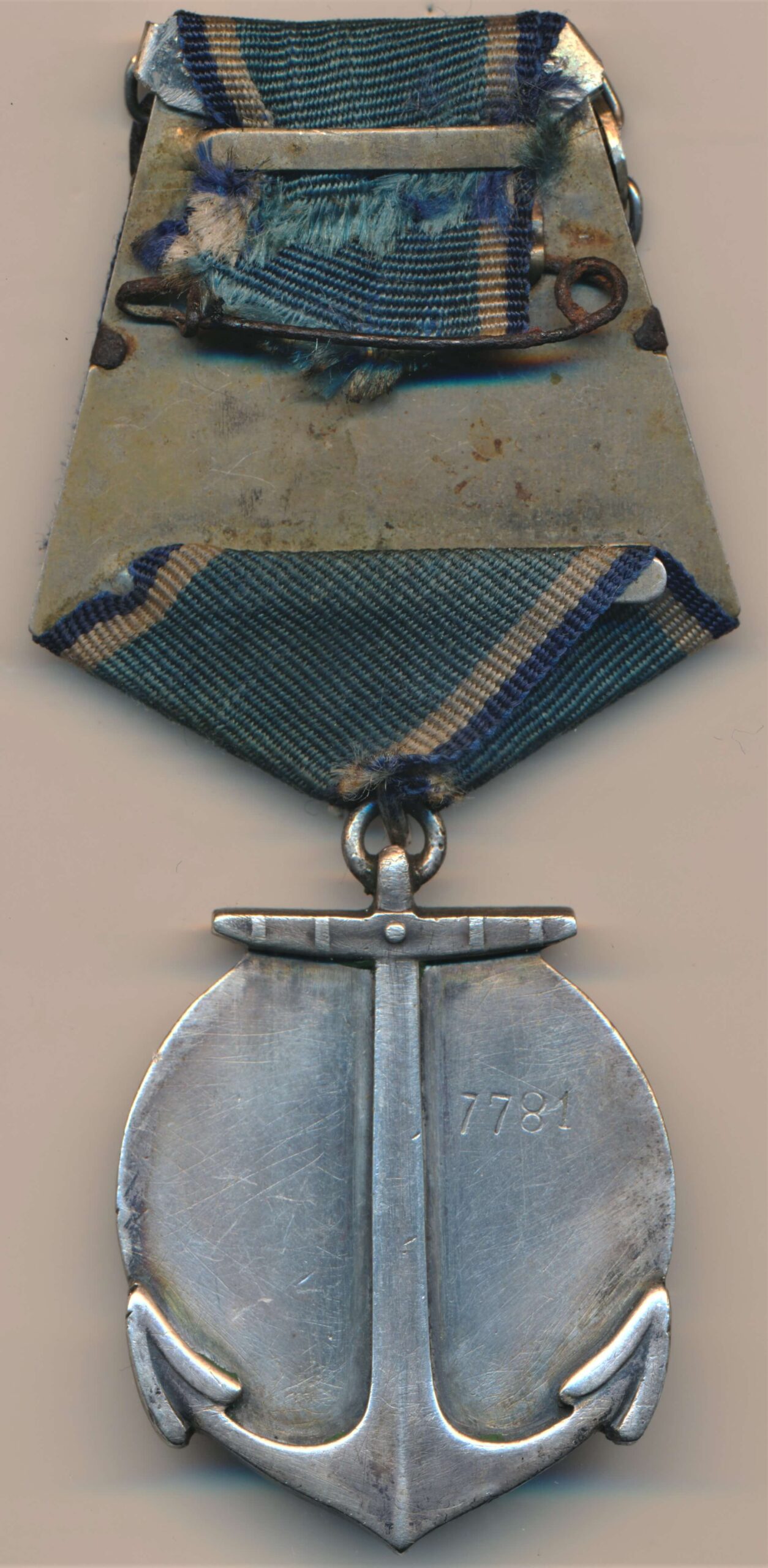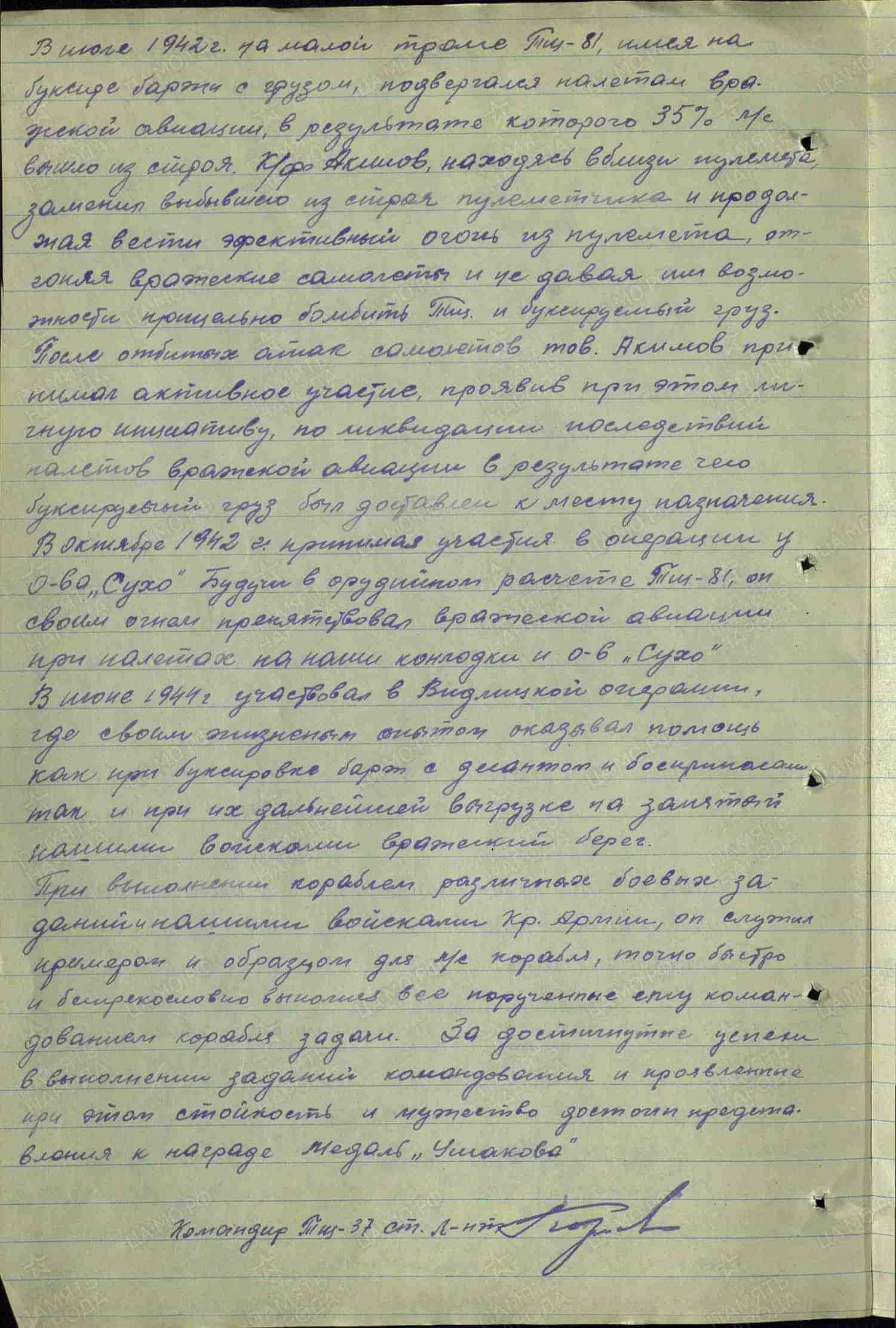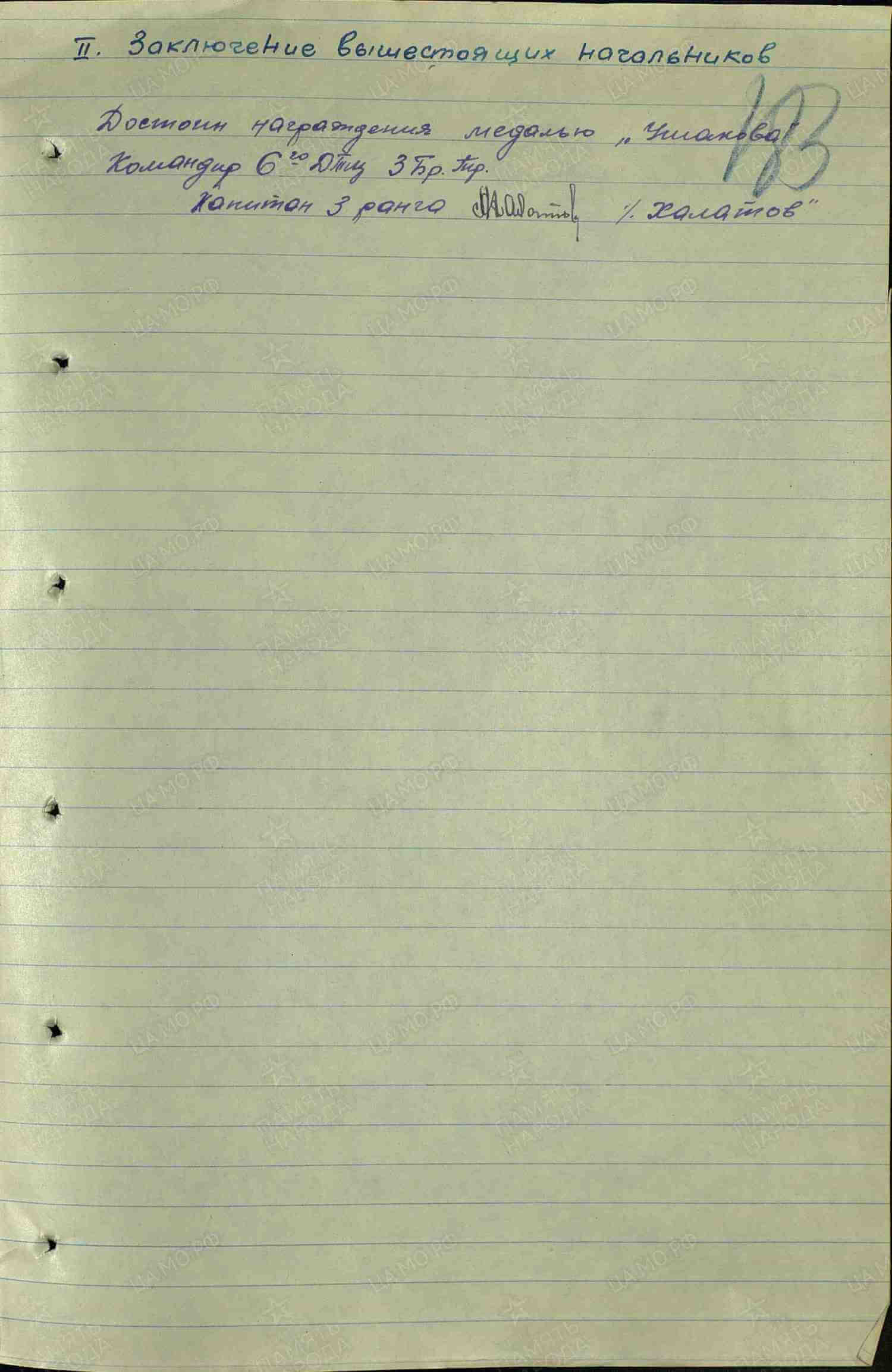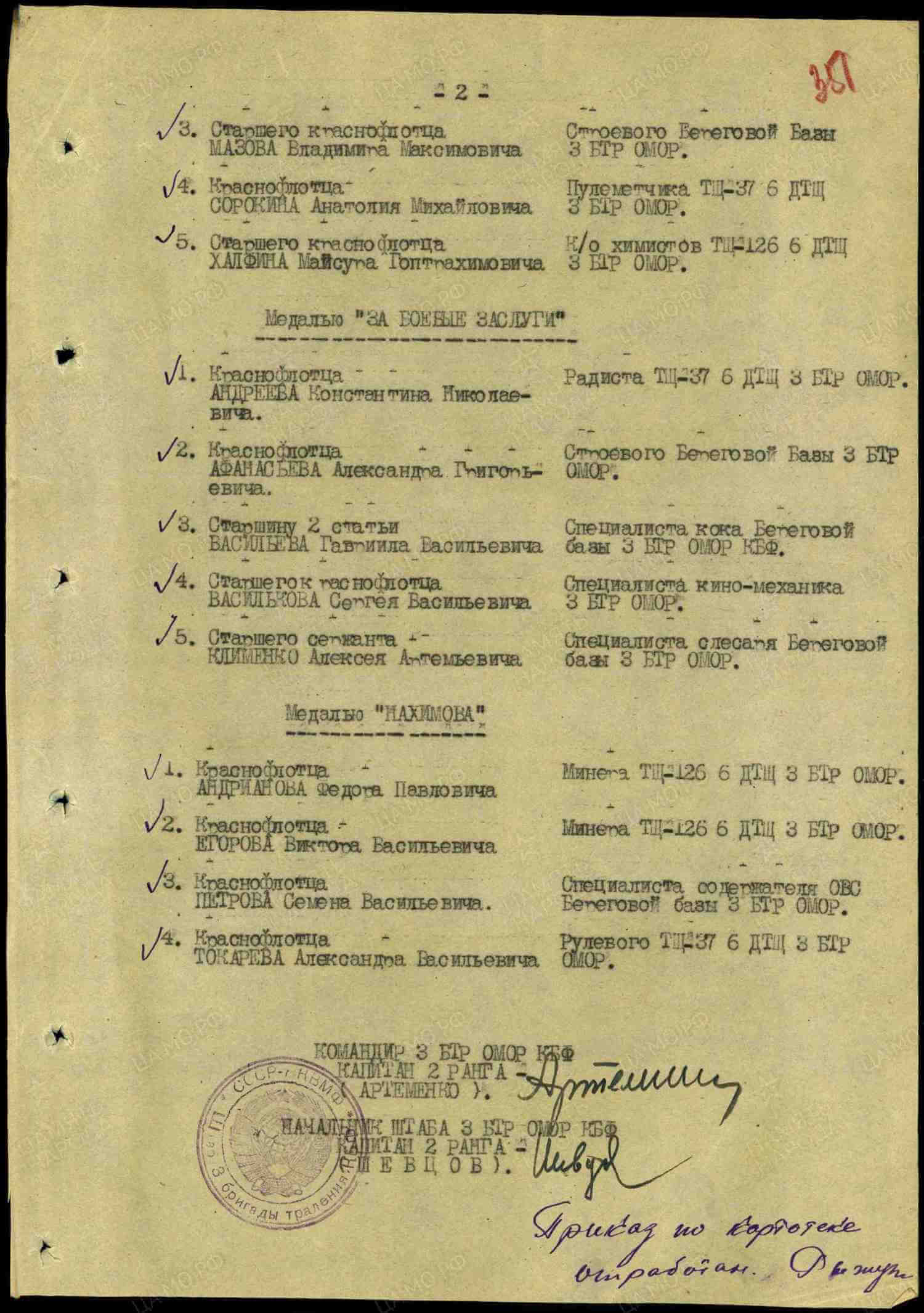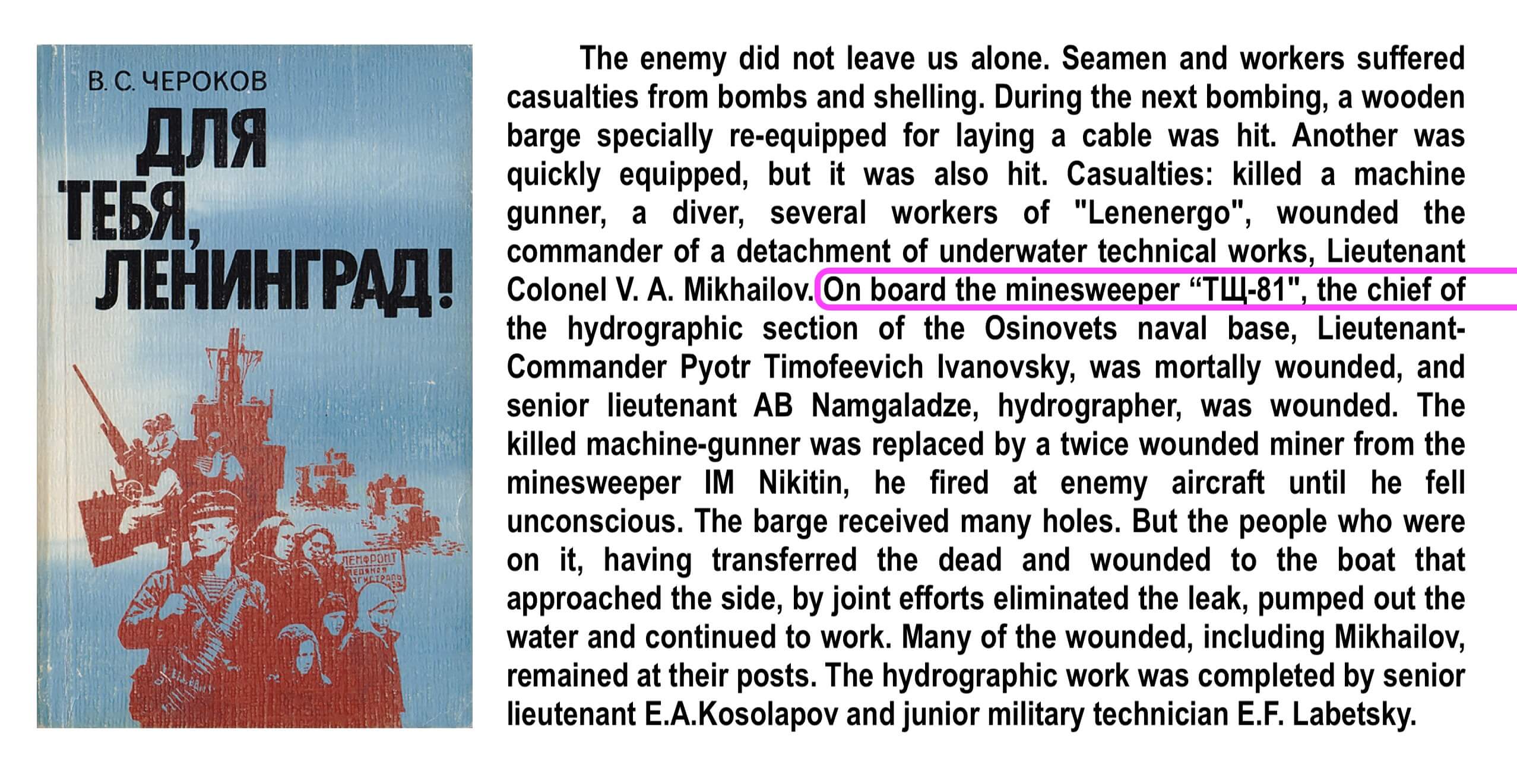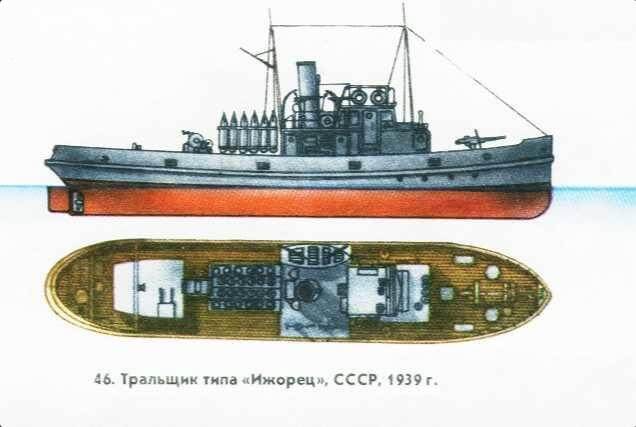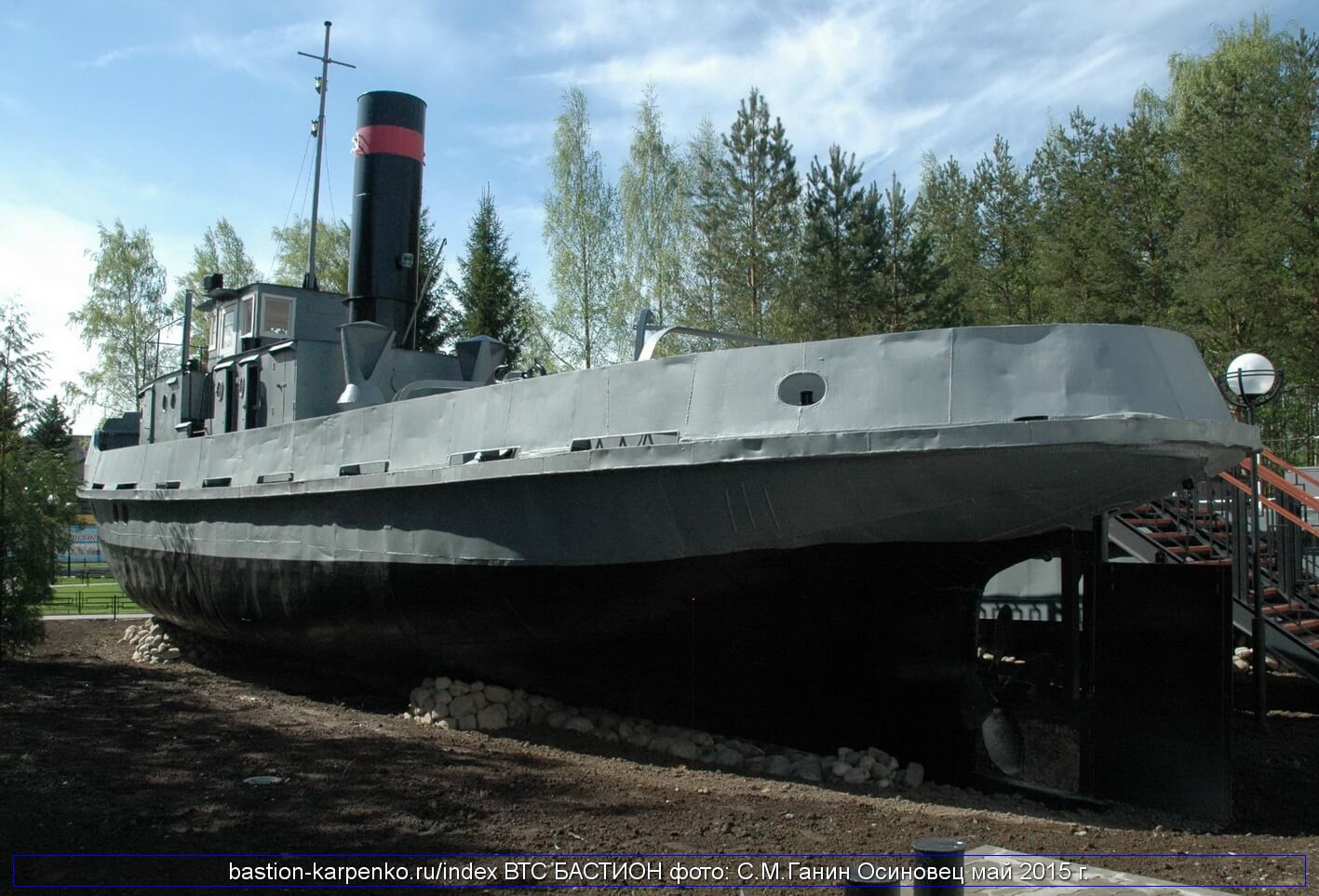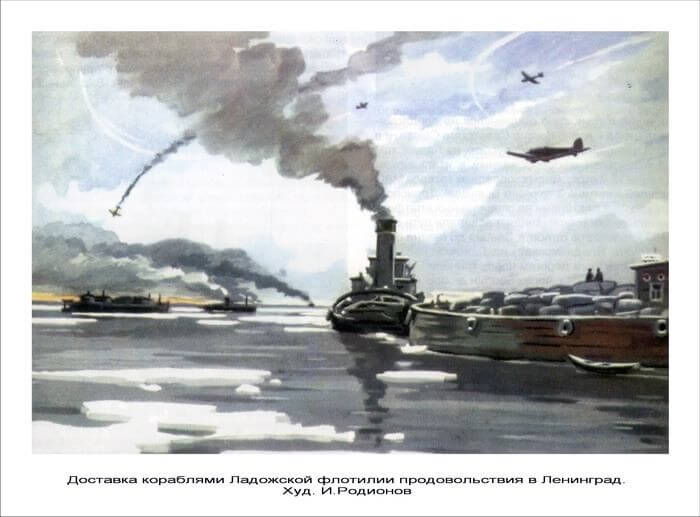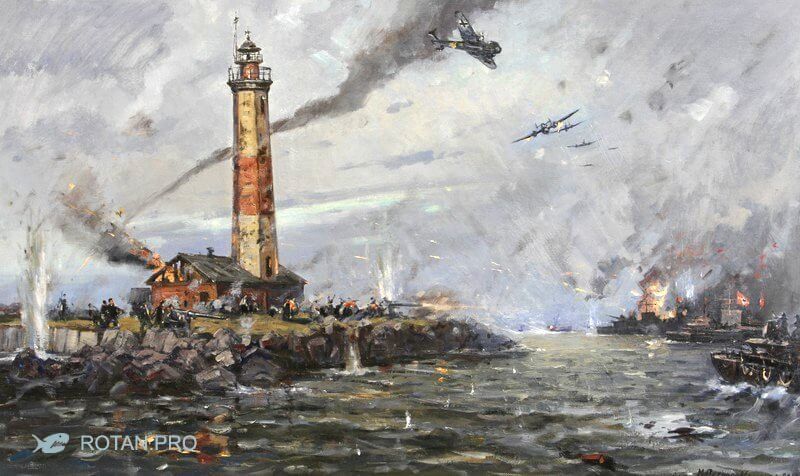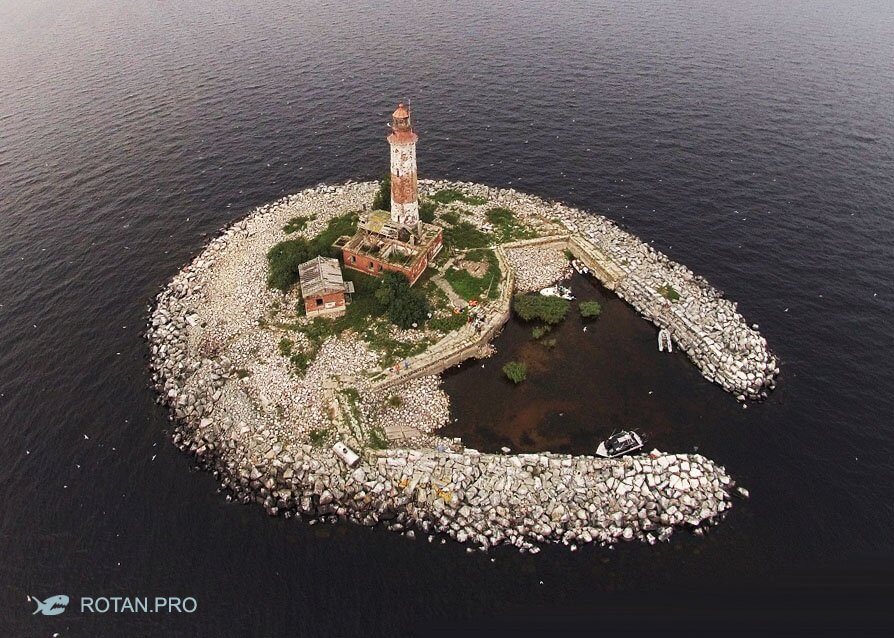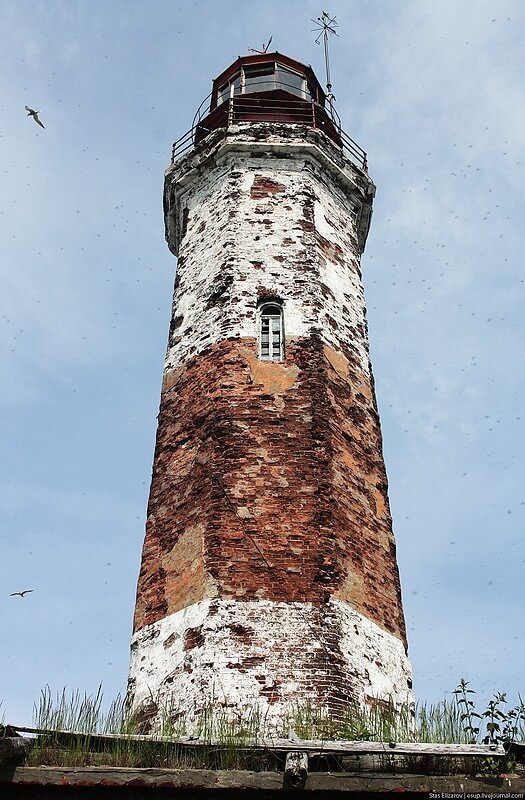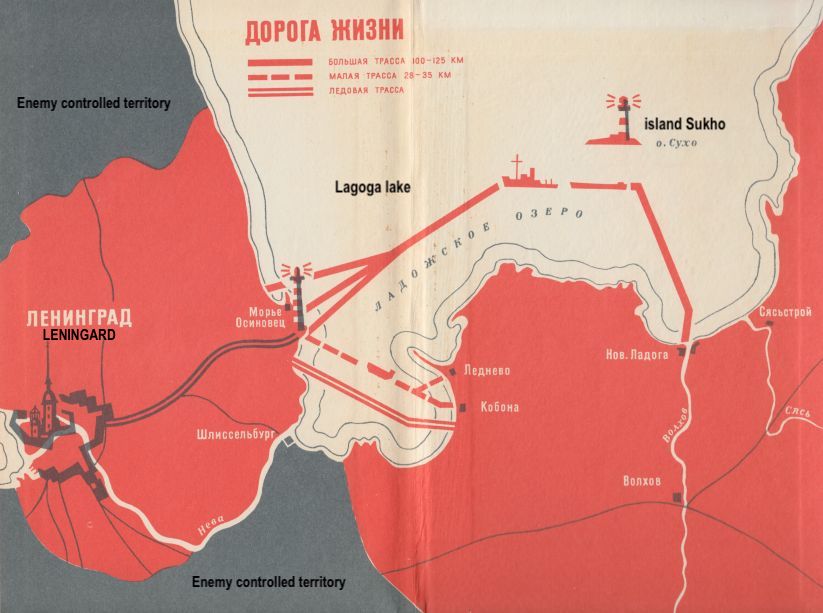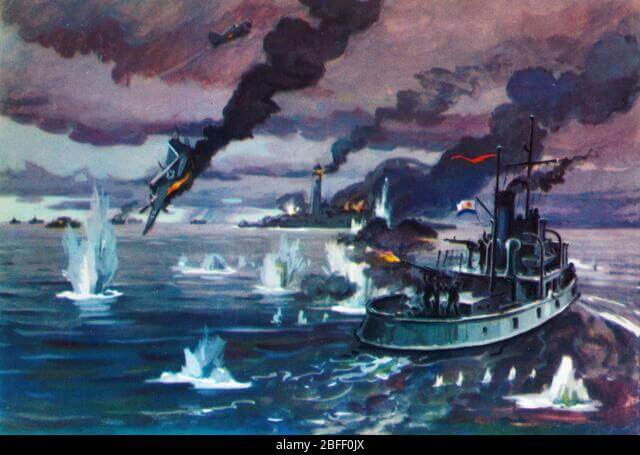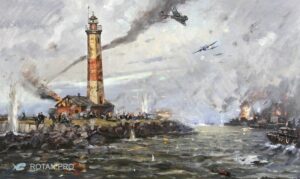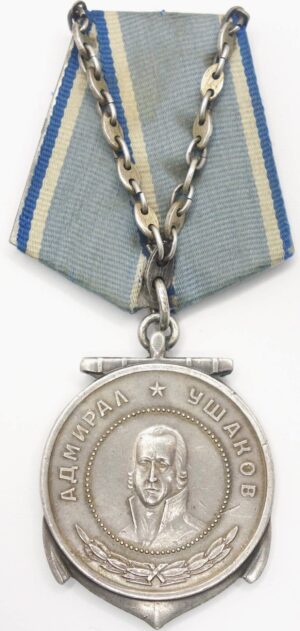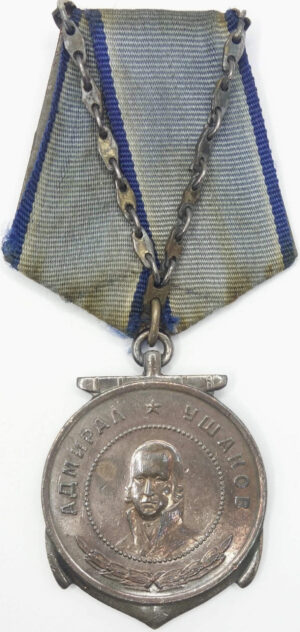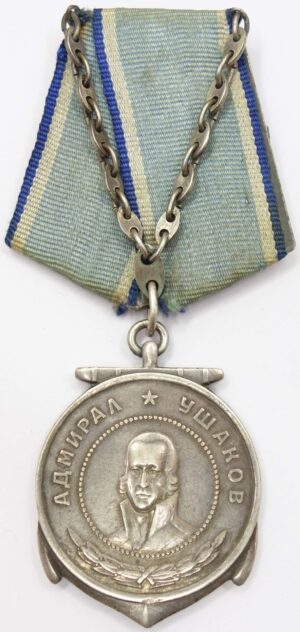Description
Soviet Medal of Ushakov #7781
Awarded to Sailor on Minesweeper ‘ТЩ-81’ Nikolaj Konstantinovich Akimov (Николай Константинович Акимов)
For delivering food and ammunition to the besieged Leningrad and evacuating the civil population out of the blockade while being subject to adverse stormy weather and constant enemy air strikes
Made of solid silver. Measures 35.85 mm in width, 48.18 mm in height including its eyelet and weighs 31.6 gram without its suspension. Featuring admiral Ushakov surrounded by 84 ‘pearls’. The serial number, “2539”, is located on the reverse of the medal. The minimum known serial number is 9 and the maximum 15704.
This Medal of Ushakov is in a decent but worn condition. There are several dings and scratches and the higher laying parts show medium to strong wear although many details are still visible. Its obverse shows an appealing dark patina and its connection ring has not been cut. The silver chain hanging diagonally on the suspension of medal is original but has been reattached to the suspension.
Scarce piece for the famous Leningrad Siege!
Brief, concrete description of his feat of arms:
“Serving on the minesweeper ТЩ-81 in 1942, Sailor AKIMOV participated actively in the freight operation for delivering the food and ammunition to the besieged Leningrad, and in evacuation of the civil population out of the blockade. The minesweeper was making its trips in the adverse stormy weather and under constant enemy air strikes. In July 1942, the minesweeper ТЩ-81 was towing the loaded barges and was subjected to an enemy air strike, which resulted in 35% casualties among the crew. Sailor AKIMOV was next to a machine-gun and replaced wounded machine-gunner. He continued firing the machine-gun and frustrated the enemy aircrafts bombing attacks on both the ship and the towed loaded barges. After the air raid was over, comrade AKIMOV participated actively in the repairs, such that the cargo was delivered to the port of the destination.
In October 1942, he participated in the landing operation on the island Sukho in the capacity of a gunner on the minesweeper ТЩ-81. His fire, frustrated the enemy aviation attacks at our gunboats and at the island itself.
In June 1944, he participated in the Vidlitsa operation, in which his extensive practical experience provided great assistance in both towing the barge with the landing force and ammunition, as well as the disembarkation to the enemy controlled coast. In all the missions assigned to the ship by the Red Army Command, he served as an example to the rest of the crew. He executed all his orders precisely, promptly, and unquestioningly.
For the successful execution of his missions and exhibited courage and bravery, he deserves medal “Ushakov”.”
The full translation of the citation can be read here
More information on Akimov can be found here
Also included in the picture gallery are images of island Sukho and of similar minesweepers
Below you will find some translated material written about the event:
=======================================================
Minesweeper ТЩ-81 (before 08.07.1941 – “Izhorets-81”, after 21.10.1944 – “T-81”)
Type: “Izhorets”
Former civil towing steamboat of the WhiteSea-Onega river flotilla. Built 1936 at the factory №375 in town Petrozavodsk. Mobilised to Navy on 07.07.1941. Equiped as a minesweeper on 13.07.1941 and assigned to the Baltic fleet. Transferred to the Ladoga lake where served until 10.10.1944.
=======================================================
Book: “For You Leningrad”
Author: Commander of the Ladoga flotilla Vice-Admiral CHEROKOV (1907-1995).
The enemy did not leave us alone. Seamen and workers suffered casualties from bombs and shelling. During the next bombing, a wooden barge specially re-equipped for laying a cable was smashed. Another was quickly equipped, but it was also hit. Killed a machine gunner, a diver, several workers of “Lenenergo”, wounded the commander of a detachment of underwater technical works, Lieutenant Colonel V. A. Mikhailov. On board the minesweeper “ТЩ-81”, the chief of the hydrographic section of the Osinovets naval base, Lieutenant-Commander Pyotr Timofeevich Ivanovsky, was mortally wounded, and senior lieutenant AB Namgaladze, hydrographer, was wounded. The killed machine-gunner was replaced by a twice wounded miner from the minesweeper IM Nikitin, he fired at enemy aircraft until he fell unconscious. The barge received many holes. But the people who were on it, having transferred the dead and wounded to the boat that approached the side, by joint efforts eliminated the leak, pumped out the water and continued to work. Many of the wounded, including Mikhailov, remained at their posts. The hydrographic work was completed by senior lieutenant E.A.Kosolapov and junior military technician E.F. Labetsky.
=======================================================
how the garrison of the island of Sukho repelled the attack of the landing – Rossiyskaya Gazeta
HOW THE GARRISON OF THE ISLAND OF SUKHO REPELLED THE ATTACK OF THE LANDING – Rossiyskaya Gazeta.
A small island in Lake Ladoga – Sukho played an important role during the Great Patriotic War. It was located on the route of the movement of Soviet convoys from Leningrad to the rear, controlled the area of the southern part of Lake Ladoga and covered the approaches to the Volkhov Bay and Novaya Ladoga, where the main base of the Ladoga Flotilla was located. The battle for Sukho on October 22, 1942 was one of the notable successes of the Soviet fleet.
Sukho is an artificial bulk island in the southeastern part of Lake Ladoga. It is located 20 kilometers from the coast and has the shape of an irregular horseshoe. Its dimensions are 90 by 60 meters.
Hitler at the end of August 1942 ordered to cut off Leningrad from Lake Ladoga. The offensive was scheduled for September 14, 1942. But the troops of the Leningrad and Volkhov fronts with their offensive prevented these plans. And then the Fuhrer demanded to cut the “Road of Life”.
The command of Army Group North developed Operation Brazil. Its key moment was the capture of Sukho Island, which was on the route of Soviet ships with cargo between the ports of Novaya Ladoga and Osinovets. This water road connected the blocked Leningrad with the “mainland”.
A German base was established in the city of Lahdenpohja. The 12th detachment of torpedo boats arrived from the Italian port of La Spezia. Self-propelled landing barges of the “Siebel” type were thrown in disassembled form by rail across Finland.
There was no garrison on Sukho Island itself until mid-summer 1942. But after the enemy began to prepare for an offensive operation, the Soviet command decided to strengthen the island. A separate battery was placed on Sukho – three 100-mm B-24BM naval guns. By the beginning of October, they had equipped three niches for shells, installed anti-aircraft machine guns and a dugout for the military.
The Germans and their allies began the offensive on the night of October 22, 1942. A landing on 30 ships went to the island. The “sea hunter” MO-171 and the minesweeper TShch-100 came to the aid of the garrison. The crews of the ships tried at all costs to prevent German ships from reaching the island.
But the enemy was able to land two platoons ashore. Hand-to-hand fighting ensued. The battery commander, senior lieutenant Ivan Gusev, received four wounds, but did not leave his post. Only after the fifth wound did he lose consciousness. On the memorial plaque on Sukho, his words remained: “The 4th hour is a strong hand-to-hand fight. The battery is bombed by planes. We have 13 left out of 70, 32 wounded, the rest have fallen. 3 cannons, fired 120 shots. Of 30 pennants, 16 barges were sunk, 1 was taken prisoner. Many fascists were beaten … “
The ships and aircraft of the Ladoga Flotilla arrived in time for the Soviet defenders of the island. And then the surviving soldiers of the garrison threw the remaining fascist troops to the sea. The Germans were forced to retreat.
Operation Brazil failed. Soldiers and sailors on Lake Ladoga, defending the small island of Sukho, actually saved Leningrad. After all, food was transported to the city by water, the population and the wounded were evacuated.
=================================
Please contact us with questions
